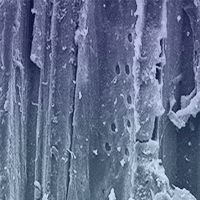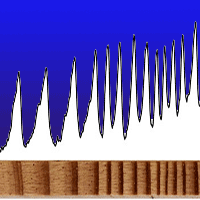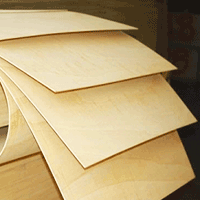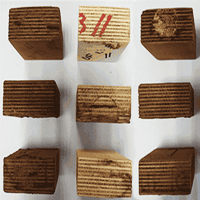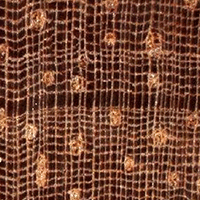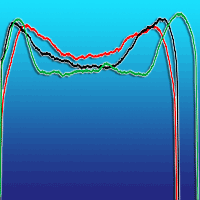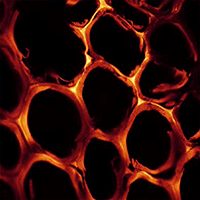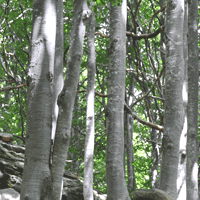
Testing common hornbeam (Carpinus betulus L.) acetylated with the Accoya method under industrial conditions
Fanni Fodor (1) , Chiel Lankveld (2), Róbert Németh (1)
iForest - Biogeosciences and Forestry, Volume 10, Issue 6, Pages 948-954 (2017)
doi: https://doi.org/10.3832/ifor2359-010
Published: Dec 19, 2017 - Copyright © 2017 SISEF
Research Articles
Collection/Special Issue: COST action FP1407
Understanding wood modification through an integrated scientific and environmental impact approach
Guest Editors: Giacomo Goli, Andreja Kutnar, Dennis Jones, Dick Sandberg
Abstract
Hornbeam wood is known for its high density, hardness, toughness, and wear resistance, but due to its low durability (Class 5 according to EN 350), limited wood quality, and rather small sawmill yield, it is mainly utilized as firewood today. The potential for hornbeam to be used as solid, high-quality wood material exists if its durability and dimensional stability can be increased. Hornbeam boards were acetylated under industrial conditions and tests were carried out to evaluate the treatability of this wood species by acetylation. In this study, the examination of physical, mechanical, and durability properties of acetylated hornbeam wood are described and compared to untreated hornbeam and to acetylated beech, which has a similar anatomical structure to hornbeam. Acetylated hornbeam was also compared to acetylated radiata pine, which is the main product of Accsys Technologies. These comparisons include the determination of the equilibrium moisture content, density, dimensional stability, accelerated checking, color change, water uptake, decay resistance, compression strength, modulus of rupture (MOR), modulus of elasticity (MOE), impact bending strength, Janka hardness, Brinell hardness, and impact bending strength. The aim of this project is the creation of a new product thereby widening the usage of this species.
Keywords
Hornbeam, Acetylation, Accoya, Physical Properties, Mechanical Properties, Durability, Color
Authors’ Info
Authors’ address
Róbert Németh
Institute of Wood Science, Simonyi Karoly Faculty of Engineering, Wood Sciences and Applied Arts, University of Sopron, Bajcsy-Zs. u. 4. H-9400 Sopron (Hungary)
Accsys Technologies PLC group, 6802 CC Arnhem (Netherlands)
Corresponding author
Paper Info
Citation
Fodor F, Lankveld C, Németh R (2017). Testing common hornbeam (Carpinus betulus L.) acetylated with the Accoya method under industrial conditions. iForest 10: 948-954. - doi: 10.3832/ifor2359-010
Academic Editor
Giacomo Goli
Paper history
Received: Jan 17, 2017
Accepted: Sep 25, 2017
First online: Dec 19, 2017
Publication Date: Dec 31, 2017
Publication Time: 2.83 months
Copyright Information
© SISEF - The Italian Society of Silviculture and Forest Ecology 2017
Open Access
This article is distributed under the terms of the Creative Commons Attribution-Non Commercial 4.0 International (https://creativecommons.org/licenses/by-nc/4.0/), which permits unrestricted use, distribution, and reproduction in any medium, provided you give appropriate credit to the original author(s) and the source, provide a link to the Creative Commons license, and indicate if changes were made.
Web Metrics
Breakdown by View Type
Article Usage
Total Article Views: 48624
(from publication date up to now)
Breakdown by View Type
HTML Page Views: 40168
Abstract Page Views: 3314
PDF Downloads: 4094
Citation/Reference Downloads: 15
XML Downloads: 1033
Web Metrics
Days since publication: 2935
Overall contacts: 48624
Avg. contacts per week: 115.97
Citation Metrics
Article Citations
Article citations are based on data periodically collected from the Clarivate Web of Science web site
(last update: Mar 2025)
Total number of cites (since 2017): 13
Average cites per year: 1.44
Publication Metrics
by Dimensions ©
Articles citing this article
List of the papers citing this article based on CrossRef Cited-by.
References
Resistance of acetylated wood to basidiomycetes, soft rot and blue stain. Document IRG/WP/94-40021, The International Research Group on Wood Preservation, Bali, Indonesia, pp. 11.
Gscholar
Testing of wood; determination of density. German Institute for Standardization, Berlin, Germany, pp. 3.
Gscholar
Testing of wood; determination of moisture content. German Institute for Standardization, Berlin, Germany, pp. 4.
Gscholar
Testing of wood; determination of swelling and shrinkage. German Institute for Standardization, Berlin, Germany, pp. 4.
Gscholar
Testing of wood; compression test parallel to grain. German Institute for Standardization, Berlin, Germany, pp. 4.
Gscholar
Testing of wood; bending test. German Institute for Standardization, Berlin, Germany, pp. 4.
Gscholar
Testing of wood; Impact bending test; Determination of impact bending strength. German Institute for Standardization, Berlin, Germany, pp. 3.
Gscholar
Mechanical properties of acetylated wood. Forest Products Society 14: 66-68.
Gscholar
Wood preservatives. Test method for determining the protective effectiveness against wood destroying basidiomycetes. Determination of the toxic values. European Committee for Standardization, Brussels, Belgium, pp. 34.
Gscholar
Moisture content of a piece of sawn timber. Estimation by electrical resistance method. European Committee for Standardization, Brussels, Belgium, pp. 10.
Gscholar
Wood flooring - Determination of resistance to indentation - Test method. European Committee for Standardization, Brussels, Belgium, pp. 14.
Gscholar
Durability of wood and wood-based products - Natural durability of solid wood. European Committee for Standardization, Brussels, Belgium, pp. 64.
Gscholar
Paints and varnishes - Coating materials and coating system for exterior wood - Part 5: Assessment of the liquid water permeability. European Committee for Standardization, Brussels, Belgium, pp. 22.
Gscholar
Wood modification, chemical thermal and other processes. John Wiley and Sons Ltd, Chichester, UK, pp. 260.
Gscholar
Chemical modification of lignocellulosic materials. Marcel Dekker Inc., New York, USA, pp. 384.
Gscholar
Wood - Determination of static hardness. International Organization for Standardization, Geneva, Switzerland, pp. 24.
Gscholar
Acetylation of lignocellulosic materials. Document IRG/WP/3516, International Research Group on Wood Preservation, Lappeenranta, Finland, pp. 19.
Gscholar
Improvements of stability and durability of beechwood (Fagus sylvatica) by means of treatment with acetic anhydride. Document IRG/WP/3645, International Research Group on Wood Preservation, Kyoto, Japan, pp. 13.
Gscholar
Faanyagismeret [Wood material science]. Mezogazdasági Szaktudás Kiadó, Budapest, Hungary, pp. 468. [in Hungarian]
Gscholar
Wood species of Hungary. Szaktudás Kiadó Ház Zrt, Budapest, Hungary, pp. 212.
Gscholar
Physical, mechanical and colour properties of acetylated poplar and robinia wood. In: Proceedings of 6th IUFRO Symposium “Wood Structure and Properties 10” (Kúdela J, Lagana R eds). Podbanské (Slovakia) 10 Sept 2010. Arbora Publishers, Zvolen, Czech Republic, pp. 231.
Gscholar
Protection of wood from decay fungi by acetylation - an ultrastructural and chemical study. Wood and Fiber Science 10: 149-163.
Gscholar
Chemically modified solid wood. I. Resistance to fungal attack. Material und Organismen 32: 159-182.
Gscholar
Critical parameters on moisture dynamics in relation to time of wetness as factor in service life prediction. Document IRG/WP/14-20555, International Research Group on Wood Preservation, St. George, USA, pp. 22.
Gscholar
Holzatlas [Wood Atlas]. Fachbuchverlag Leipzig im Carl Hanser Verlag, Germany, pp. 816. [in German]
Gscholar

